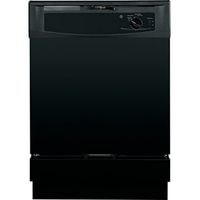GE dishwasher overflow. GE dishwasher problems can be difficult and frustrating to deal with, especially when you have a big family or entertaining guests coming over.
We understand that it needs repair as soon as possible if there is any water overflow damage. By ensuring that your GE dishwasher is functioning properly, you can avoid this issue.
Faulty parts such as leaking hoses could be the cause of the overflow so we will explain what these are and how to fix them.
GE dishwasher overflow
Troubleshoot why a GE dishwasher can overflow. The listed are the most common reasons why a GE dishwasher could flood:
If you do not find the cause of your problem, make sure to leave us a comment below and let us know exactly what your issue is with your GE dishwasher.
Defective Water Inlet Valve
Water enters the dishwasher through an electrically controlled valve called the water inlet valve. It depends on the model whether the valve stays open for a set period of time or until the machine is filled with enough water.
But if this item malfunctions, water can begin to pour out from beneath the dishwasher into your kitchen or garage. The appliance may emit hissing or leak when there is leaking beneath it.
It means there is a separate issue with the ground fault circuit interrupter connected to the electrical source that powers your dishwasher and other kitchen appliances.
However, so long as it is not accompanied by dangerous electrical sparks or visible leaks of water above a certain threshold, we recommend replacing this element instead otherwise you will risk getting electrocuted one day as well as severely damaging your dishwasher immediately after due to short-circuiting.
Faulty Float Switch
In order to prevent the dishwasher from overflowing, the water level depresses the float switch. It might not prevent the dishwasher from overflowing if this part is defective or stuck.
If this part is defective, replace it once you remove the lower rack from inside of the dishwasher and loosen a nipple on top of the rotating spray arm.
The Worn Out Door Gasket
Dishwashers have certain components that make the appliance work. If one of these components breaks down, it can cause problems with the dishwasher’s performance and eventually lead to leaks.
One common component is called a gasket. The purpose of this part is to help seal in water and keep it inside the dishwasher while it cleans your dishes.
There are many kinds of gaskets, but they all serve the same function because this is their job as a regular dishwashers. But if food or debris becomes stuck on the gasket.
its ability to hold in water gets weaker over time until the machine develops leaks which you’ll notice right away. In the event of a leaking dishwasher, it is important that you take action right away.
There are too much soapsuds
Most likely, you are facing one of two common dishwasher mistakes when you find suds on your floor. Overusing dishwasher detergent is the most common mistake.
The accumulation of soapsuds in your dishwasher and on your floor may be caused by too much detergent in your appliance. You may need to mop-up sudsy water as a result of using inadequate detergent.
While some lower-quality detergents may be considerably cheaper in cost, the poor quality of the soap has been known to dry up rags used for cleaning and leave floors very streaky and unable to be completely cleaned without further intervention.
Dishwasher bottom clogged or blocked
The bottom of the dishwasher can accumulate food particles that block the drain and prevent water from leaving that area. All trapped food must be removed with a spatula in order to solve this problem. Once it’s clear, one can determine whether or not there are any bubbles in the water.
Bubbles usually mean that something is blocking the drain. Clear around objects with sharp edges, such as plates and glasses, for good measure.
It might take a few cycles, but eventually, water will stop pooling on top of other dishes due to blockages from trapped food particles.
Related Guides
